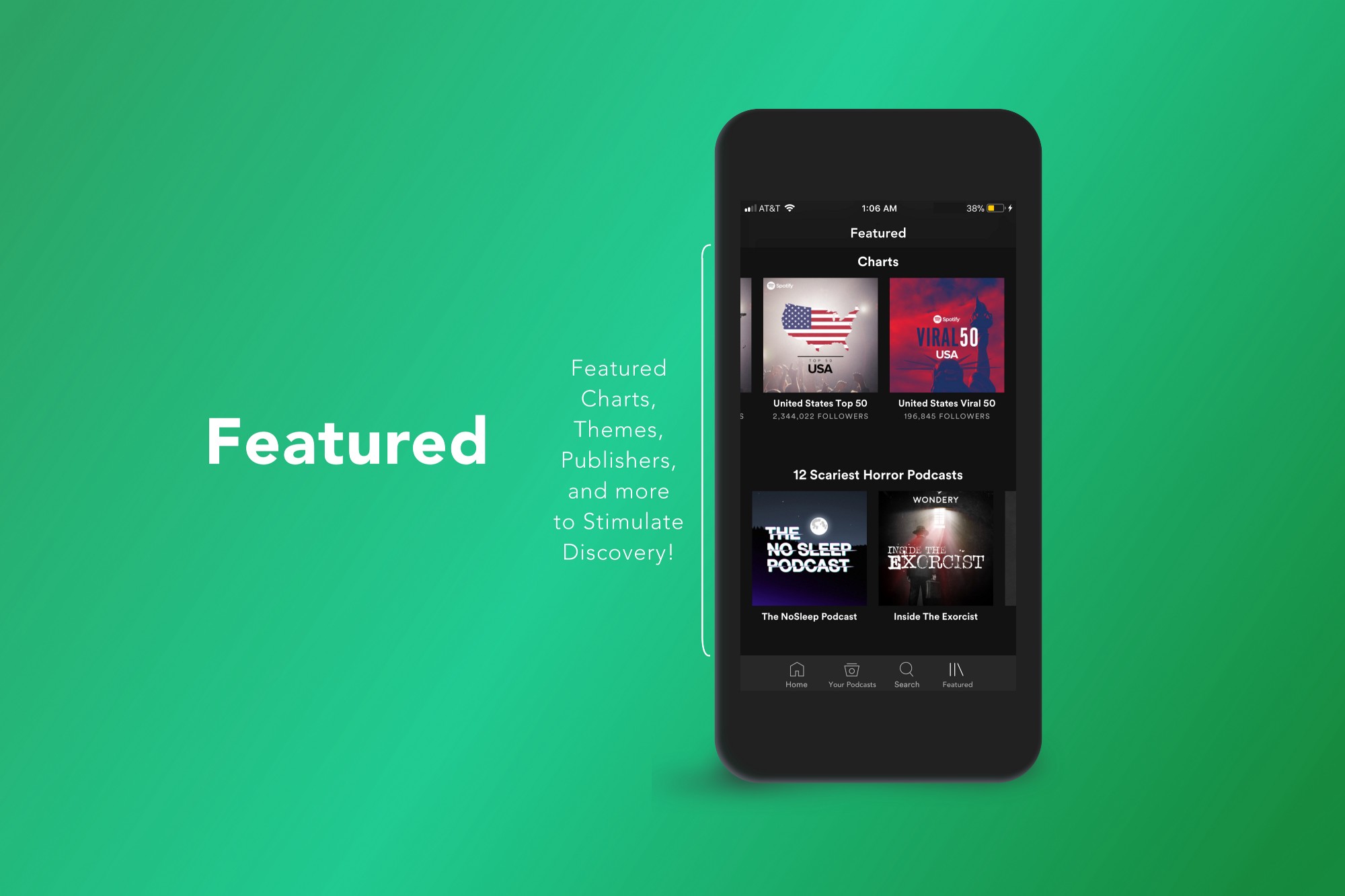With all this winter snow... one of our guys has been testing out our new ski app backcountry. It's holding up! ⛷🎿🏂❄️🏔🗻
Learn more about our app here.

Learn more about our app here.

Image via Spencer Camp at Prototypr.io
Spotify recently announced its acquisition of both Gimlet Media and Anchor, boosting up its podcasting abilities significantly. The podcasting industry is expected to grow to $700 million by 2020 in the United States alone. While Spotify has declared its intention to dominate the podcasting space, there are some things the company will need to do to become a podcasting haven.

Image via Spencer Camp at Prototypr.io
Spotify’s web app works very well, but once you go to mobile, the podcast tab currently is unwieldy. Finding your podcasts is not easy either as you have to go to your library and search in there. Spotify can benefit from clearly distinguishing between podcasts and music and making podcasts easier to discover and explore.

Image via Spencer Camp at Prototypr.io
Spotify currently offers top charts for music, but is very limited when it comes to podcasts apart from an annual best list, trending and top podcast charts. Some possible improvements include adding top charts for every show category and top podcasts, like Apple does. Other possible features include allowing people to rate shows and leave reviews.

Image via Spencer Camp at Prototypr.io
Spotify made discovering personalized music easy and fun with its weekly playlists through Discover Weekly. Creating something similar with podcasts could help users find new podcasts. Often listeners find about podcast shows through friends, but having a direct, personal way to discover music would be appealing. NPR One app already offers this feature with personalized playlists based on a person’s listening habits.
Prior to its acquisition by Spotify, Anchor had announced a sponsorship feature where any podcaster could request a sponsorship. This allows a podcast creator to earn some money, while Anchor took a 30 percent fee. Podcasters usually have to partner with a larger podcast network to receive any ads or work very hard to even be noticed.
Private feeds enable individuals and companies to build and release internal podcast shows. Currently, Spotify does not offer this option. Apple lets you add podcasts via an RSS link.
Similar to radio, Anchor offered users the opportunity to interact with their hosts. A podcast creator can field calls from listeners and even add people to conversations. When the call is completed, the podcast host can share transcribed video on social media.
By addressing the essential needs of podcast creators from content creation to distribution, monetization and interaction with listeners on one unified platform, Spotify can become a podcasting haven.

You may be surprised to discover that the most popular mobile payment method isn’t a technology giant, but a coffee company. Starbucks dominates consumer preferences for mobile payment, with its app offering the most popular mobile payment method. The coffee chain is essentially functioning like a bank.
According to market research firm eMarketer, 23.4 million consumers ages 14 and up use the Starbucks app to make an in-store purchase at least once every six months in 2018. This means that Starbucks has more users than mobile payment products directly from Apple (Apple Pay), Google (Google Pay) and Samsung (Samsung Pay). Apple Pay comes in second with 22 million users, followed by Google Pay with 11.1 million consumers and Samsung Pay with 9.9 million.
Shocking as this may seem, it starts to make sense when you put this news in perspective - the rise of Starbucks app’s popularity occurs at a time where the coffee company is a household name worldwide, consumers consider commerce platforms their own personal assistants and many users get their news from social media. The convenience of ordering a drink and food from your smartphone cannot be underestimated.

Starbucks is expected to maintain this lead for the next few years foreseeably as the company brings value to its customers in ways that the tech giants do not offer directly, such as the Starbucks Rewards program. Currently Starbucks Rewards members receive two stars for every $1 spent. This can be redeemed for free food and drinks, birthday rewards and free in-store refills. One of the biggest conveniences of the app is the ability to order ahead and pay by phone - not an option for other fast food restaurants. The app also eliminates the need to carry cash and with the mobile payment option, customers can enjoy picking up their food without having to wait in line.
Benefits for the customer include:
- ease and convenience
- saving time
- avoiding long lines at the register (mobile orders)
- gaining rewards and special offers

In the first quarter of 2016 alone, Starbucks had over $1.2 billion loaded onto Starbucks cards and its apps, according to a 2016 MarketWatch report. This amount was more than all the deposits at several financial institutions including California Republic Bancorp ($1.01 billion), Mercantile Bank Corp. ($680 million) and Discover Financial Services ($470 million). Starbucks first started offering mobile payments back in 2011.
Starling Bank in the UK, has capitalized on the mobile trend, recognizing how customers love the ease and convenience of doing their financial transactions all from their smartphones.
In some respects, the popular coffee company functions like an unregulated bank. Mobile payments are expected to rise annually. While Samsung Pay is accepted by the most merchants, the app is the least used of mobile payment options. Apple Pay is the most popular mobile payment option among the three tech giants and was the first app to launch. Google Pay, while not as commonly used by consumers, does come preinstalled on Android devices.
Additional merchant-branded apps are entering the market now, including fast food chain McDonald’s, Dunkin’ Donuts, Target and Walmart. These companies aim to capture valuable data about their customers while adding rewards programs to build customer loyalty.